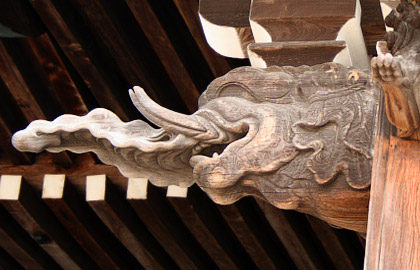|
||
 |
||
However, it is thought that realistic forms of animal nosings did not originate in daibutsuyou, but may have been inspired by the pedestals of the deities *Monju Άμ (Sk: Manjusri) and *Fugen « (Sk: Samantabhadra), since Monju is portrayed mounted on a lion and Fugen on a white elephant.

Senshuuji Nyoraidou κC@° (Mie)
@
(C)2001 Japanese Architecture and Art Net Users System.@No reproduction or republication without written permission.
fΪΜeLXgEΚ^ECXgΘΗASΔΜRecΜ³f‘»E]ΪπΦΆά·B

